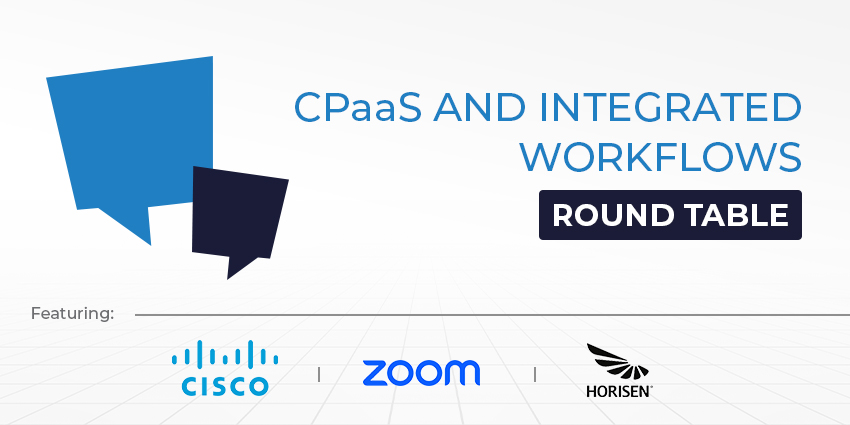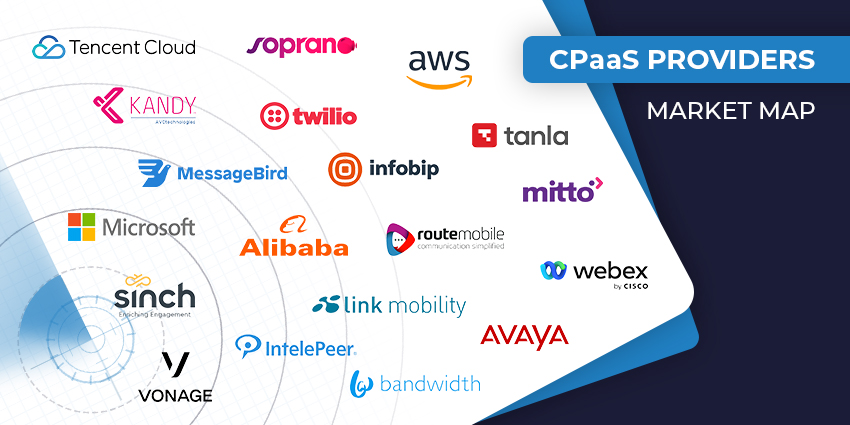The world of communication is evolving at an incredible pace. These days, consumers and business users alike expect to be able to reach their contacts through a range of different mediums. They don’t just want access to email and voice but video, messaging, SMS, and social media too.
For companies looking to stay one step ahead of the changing landscape, it’s not enough to simply invest in a multitude of different, disparate platforms for communication. In fact, the more tools and solutions businesses need to implement, the more complex, difficult to manage, and risk-prone their ecosystem becomes. As a result, many brands have begun searching for ways to embed the communications functionality they need into their existing apps, tools, and processes.
That’s where Cloud Communication APIs (Application Programming Interfaces) come in. These solutions allow companies to quickly and conveniently expand their communication options without having to rely on disconnected tools and processes.
What are Cloud Communications APIs? An Introduction
APIs, or “Application Programming Interfaces”, are pieces of code which allow tools to communicate with other services and solutions. In the case of cloud communication APIs, the code connects an application to a communication framework via the cloud. For instance, companies in the Microsoft landscape can use the “Cloud Communications API” within Microsoft Graph to add bot functionality to their existing Microsoft tools like Teams.
For instance, a company might use an API to connect a call routing bot to Teams, so they can easily send the right caller to the right agent when someone contacts the team via their business number or a communication app. Companies can also leverage CPaaS vendors like Twilio to embed APIs into their existing applications, which enable access to features like video conferencing, SMS, or even WhatsApp and Facebook Messenger.
The most common types of APIs for cloud communications include:
- Voice APIs: Voice APIs enable voice communications in specific apps, allowing users to press on a button to start a call with a company. Different voice APIs can enable various types of voice communication features, such as call recording, call routing, conference calling, and even text-to-speech functionality.
- SMS, MMS, and RCS: Messaging is quickly becoming one of the most popular forms of communication, particularly in the mobile world. Many CPaaS (Communication Platform as a Service) providers provide access to messaging APIs which bring SMS and MMS functionality into existing applications. Rich Communications Services (RCS) messaging is also available in many CPaaS API lists. With RCS, it’s possible to embed messages with buttons, multimedia, and even location information via apps such as Google maps.
- Video APIs: Similar to voice APIs, video APIs enable companies to connect with their customers through video conferencing, often using integrations with video conferencing providers like Zoom. Video APIs can simply enable video or support advanced features like videos with presentation features, virtual backgrounds, and recording.
- Chat APIs: As tools like WhatsApp and Facebook Messenger have grown increasingly popular for internal and external communication, chat APIs are gaining ground. Chat-based APIs often provide a direct connection to a specific chat app, such as WhatsApp. With an API, companies can even automatically send notifications, receipts, and invoices to customers through their preferred chat software.
- Emergency calling APIs: Emergency calling APIs grant access to “E911” solutions, allowing end-users to contact local emergency services rapidly where needed. This functionality is often provided in locations all around the world by leading CPaaS solution providers.
How to Use Cloud Communications APIs
The exact process of implementing a cloud communication API into an existing tool or workflow will differ depending on the platform or CPaaS solution in question. For instance, Microsoft has its own step-by-step guidance available to users who want to register bots with the Microsoft Cloud Communications API in Microsoft Graph. In general, however, implementing a cloud communications API involves a few simple steps:
- Step 1: Select an API: First, companies or developers will need to find the API they want to incorporate into their business. For instance, they may choose a Facebook or WhatsApp messenger API for chat or a Zoom API for video conferencing.
- Step 2: Get an API Key: Next, users need to access an API key to identify themselves as valid client and set policies and permissions for their APIS. While some APIs have free keys readily available, others require payment. Either way, most companies will need to sign up with a dedicated service to access a unique identifier and key.
- Step 3: Review documentation: Alongside a key, most API solutions come with documentation, which acts as a kind of instruction manual on how to use the solution. The solution provides guidance on all the information required to use the API, as well as tutorials, examples, and guidelines. Most leading CPaaS companies and communication vendors have phenomenal documentation available to business owners.
- Step 4: Write a request: Next, developers will need to write a request to a communication endpoint, often using an HTTP client. Tutorials and guidance are often extremely useful in this stage, as they can provide step-by-step instructions on how to write effective requests.
- Step 5: Sync the app: Finally, developers can sync their application with the communication API using languages like Python, PHP, JavaScript, and Java.
Using Cloud Communication APIs
As mentioned above, most CPaaS providers and communication vendors now offer API solutions to help companies connect the communication tools they need to their ecosystems as quickly and conveniently as possible. In most cases, this will involve using “REST” APIs, which generally require less coding and are less complex than alternative SOAP APIs.
For companies new to the API landscape, the best strategy is usually to choose a communication provider or CPaaS company capable of offering easy access to and guidance for API functionality. Brands like Microsoft have a comprehensive set of documents, guidelines, and tools already in place to help business leaders leverage the API landscape.







